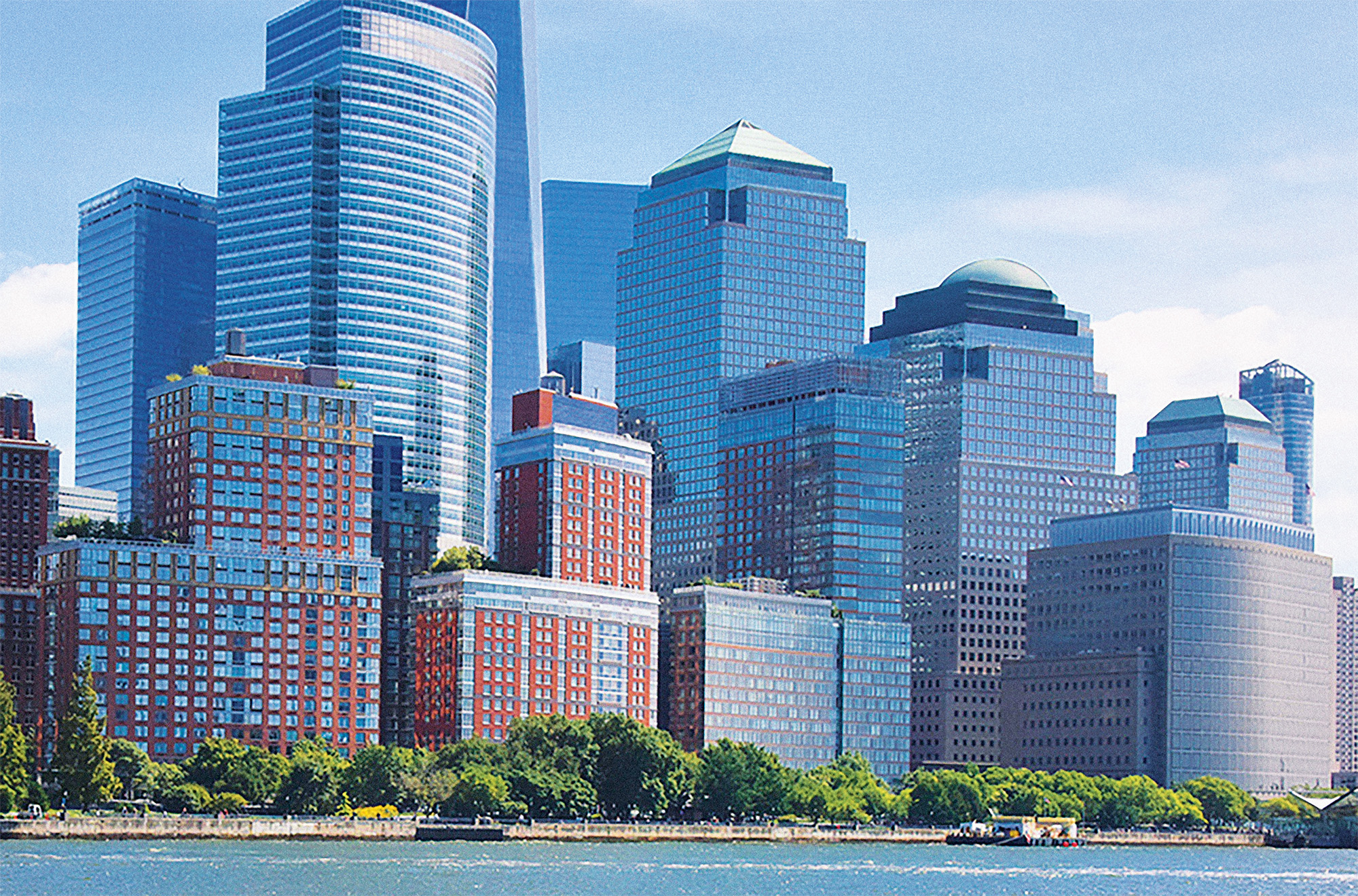
The Hugh L. Carey Battery Park City Authority, a New York state public benefit corporation, was originally formed in 1968. It was tasked with developing and maintaining a well-balanced, mixed-use community on the lower west side of Manhattan, on to-be-built land that would replace deteriorating piers along the Hudson River.
Now, Battery Park City is a 92-acre shoreline neighborhood that boasts 36 acres of parks, 16,000 residents, 50,000 workers, and approximately 700,000 annual visitors.
Because of its responsibility for a community that is directly affected by rising sea levels and climate change, the BPCA this September released a 10-year sustainability plan that is a “comprehensive pathway of strategies, goals, and specific actions to achieve progressive sustainability targets over the next decade,” according to material distributed by the corporation. It also lays the groundwork for continued sustainability action after 2030.
Part of the impetus behind the BPCA sustainability plan is the authority’s charge to create a carbon-neutral neighborhood by 2050, a goal that aligns with other sustainability efforts underway in New York state. The state has set a target to reduce its greenhouse gas emissions by 40 percent by 2030 and 80 percent by 2050, compared with its 1990 emissions, according to the BPCA. The state’s Green New Deal sustainability effort also aims to achieve 70 percent renewable energy by 2030 and 100 percent carbon-free electricity by 2040.
The BPCA hopes its sustainability initiative will “provide resources to inspire the Battery Park City community as well as develop frameworks that can be replicated by other communities so that we can … inspire change beyond the boundary of Battery Park City,” according to Ana Serra, an associate sustainability consultant in the New York City office of global professional services firm Buro Happold. Serra spoke at a Battery Park City webinar panel discussion on the sustainability plan that the BPCA held during New York’s Climate Week. (Buro Happold partnered with the BPCA on the project and led the development of the plan).
The plan was “created as a holistic vision for sustainability at Battery Park City,” notes Mikayla Hoskins, a senior consultant for Buro Happold, who also presented at the climate-week event.
The plan was developed with input from public roundtables, pop-ups at public events, an online survey, and meetings at the BPCA offices. Interagency coordination was also an important part of the process. Experts from the New York Power Authority, the New York State Energy Research and Development Authority, Consolidated Edison, the New York State Department of Environmental Conservation, and the New York City Mayor’s Office of Sustainability all weighed in as part of the Battery Park City Carbon Neutral Working Group.
The sustainability plan focuses on three main goals: resource management and reduction, innovation and inspiration, and education and collaboration.
For the first goal, resource management and reduction, the BPCA plans to reduce the neighborhood’s demand for energy and water, promote creative use of its resources, strengthen its resilience, enhance its ecosystems, and minimize its waste.
For the second goal, innovation and inspiration, the BPCA plans to reduce the neighborhood’s carbon footprint and create scalable models of its efforts so that urban areas around the world can implement them, accelerating their own environmental action.
The third goal, education and collaboration, involves improving the environmental quality of the neighborhood and its residents’ quality of life and reducing utility and operational costs. By bolstering engagement and education about sustainability throughout the neighborhood, the benefits of these actions can be shared, according to material distributed by the BPCA.
Organizationally, the plan is centered on four topic areas: energy, water, materials and waste, and site. Within these topic areas, specific strategies that support the three major goals above are identified. Targets and milestones are also specified to help the BPCA track its progress toward meeting its goals by 2030.
Within energy, the plan covers deep energy retrofits that would reduce building energy consumption and costs, converting buildings from natural gas to electricity, monitoring and reducing greenhouse gas emissions, developing low-carbon district-scale energy systems to balance loads and centralize management, and increasing the generation and procurement of renewable energy supplies and on-site battery storage.
For water, the plan focuses on conservation, the development of gray water and black water recycling systems, and upgrading the neighborhood’s resiliency to storms and its stormwater infrastructure.
For materials and waste, the plan centers on sustainable consumption and building materials, waste diversion, the collection and composting of organic material, and reducing the impact and waste from construction and demolition activities.
The last topic area, site, casts a wide net that encompasses the development of resilient biodiversity and habitats; environmental monitoring and data sharing as well as improving active transportation (that is, nonmotorized transportation); electric vehicle infrastructure; and the environmental quality of life for occupants, workers, and visitors. The latter would be accomplished by reducing noise pollution and the urban heat-island effect while improving air quality.
Resiliency is included in the sustainability plan because Battery Park City’s coastline location puts it in a “precarious position in lower Manhattan,” according to Gwen Dawson, the vice president of real property at the BPCA, who also spoke at the webinar panel discussion. Hurricane Sandy was “an eye-opening experience” and part of the reason that the BPCA wants to get these projects implemented as quickly as possible, Dawson says.
The Battery Park City Sustainability Plan, and its two supplementary documents — the Sustainability Implementation Plan and the Battery Park City Green Guidelines — can be downloaded at the Battery Park City Authority's website.
This article first appeared in the November 2020 issue of Civil Engineering.




